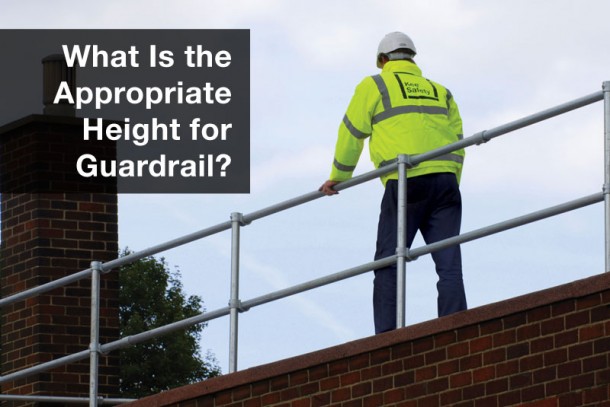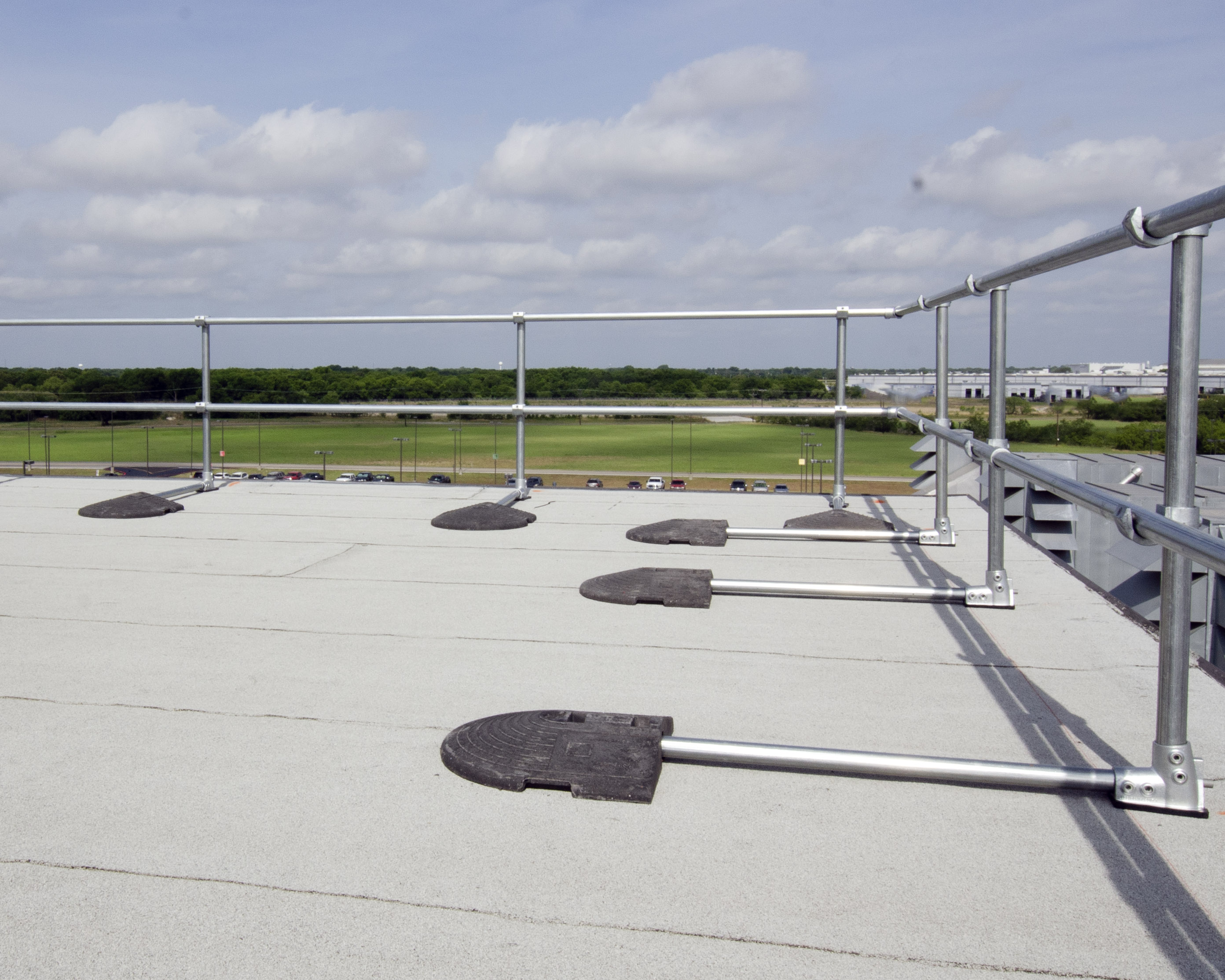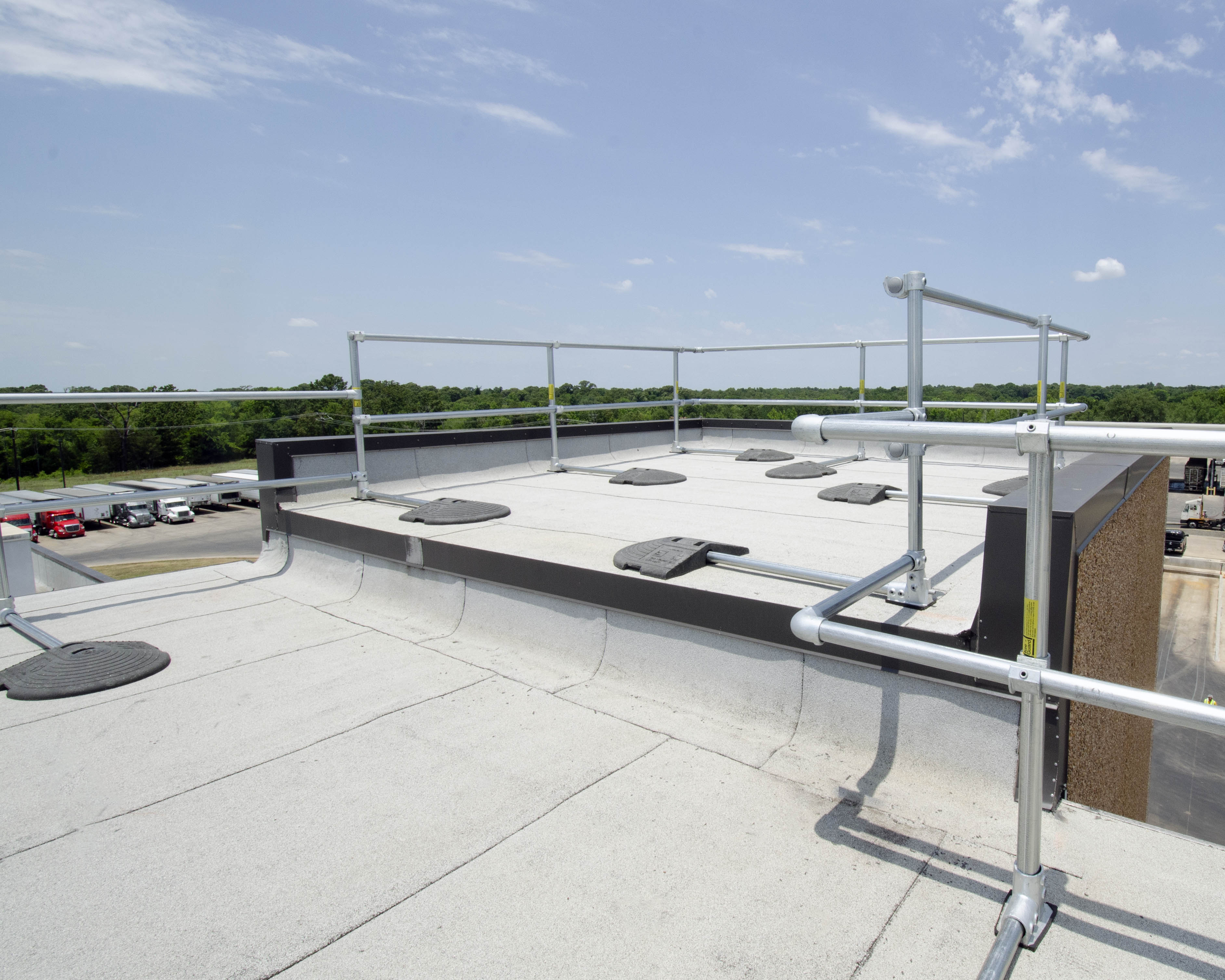What is the Appropriate Height for Fall Protection Railing?

There are many different types of roof safety railings on the market. Regardless of their style or mounting method, they all must meet the same criteria. All must be capable of withstanding at least 200 lbs. of force in any direction (for General Industry) or in a downward or outward direction applied within 2” of the top edge (for Construction). In addition, all must be built to the same height to be compliant with OSHA regulations for employee protection.
The simple answer to “What height must a railing be in order to be compliant?” would be 42”, but there are some nuances to that answer.
The Basics of When Guardrail is Required
 In General Industry, OSHA standards say the guardrail height railing must be 42” high. Simple!
In General Industry, OSHA standards say the guardrail height railing must be 42” high. Simple!
But in the Construction Industry OSHA states the proper response is 42” plus or minus 3”. In the Construction industry, your rail is compliant if the top railing falls between 39” from the walking surface and 45” from the walking surface.
This holds true whether you are utilizing a manufactured railing or one you’ve built on your job site. When working with rigid materials, like 2x4s or metal tubing, this is pretty cut and dried, but when you’re dealing with wire rope, you need to make sure you are taking sag into account. Your wire rope – or any other flexible material – cannot deflect below 39” when the 200 lbs of force is applied to it.
Regardless of whether we’re discussing a rooftop guardrail system, a temporary railing system, or a job-made railing the height of the top rail must always be 42” (plus or minus 3” in Construction).
There are always caveats.
Not sure what type of guardrail will work for you?

Our team of safety experts is ready to help!
Guardrail Height for Elevated Workers
One such caveat specifically noted in the OSHA regulations for Construction is if workers are working on stilts. For those readers not in the construction industry, this may seem strange, but some trades such as painters, spacklers, and tapers will sometimes use stilts so they can move from one high area of the room to another without having to climb up and down a ladder or relocate their scaffold.
If workers are utilizing stilts in an area protected by guardrails, the 42” requirement must be extended to match the height of the stilts. In other words, if the workers are on stilts that are 2’ (24”) high, then the top rail of your guardrail system must be at 66” (this will also affect the height of your mid-rail which is always located halfway between the walking surface and the top rail, regardless of how high the top rail is).
Measure from Working Surface
 It is also important to remember that the height of 42” is measured from the walking/working surface which is not always the same as the floor or roof height.
It is also important to remember that the height of 42” is measured from the walking/working surface which is not always the same as the floor or roof height.
If you’re installing rails at the edge of your roof and a few inches in from the edge there is a raised portion of the roof, then your top rails need to be 42” from that raised surface, not from the roof itself.
Consider the Work Being Done
Other times, the tasks we are working on inadvertently cause us to bypass the protections that have been put in place. Take a look at any multi-story construction site you pass. First, do you see rails at the perimeter of the building? If so, let’s assume the railings meet all the proper height criteria.
But what happens when one of those construction workers needs to run some wiring, pipe, or conduit along the ceiling near the perimeter of that building? The moment they begin to climb up a ladder, they’ve bypassed their protection.
This would be the same for a maintenance worker changing light bulbs in a parking garage. In reaching those bulbs that may be located at the interior perimeter of the garage, has he or she bypassed the protection they are afforded by the walls?
It is important to know, at all times, what your fall protection is and if it is sufficient for you for every task you perform.
Guardrail Exceptions for the General Industry
Finally, we can’t forget to turn to letters of interpretation to see if anything differs from the regulations as written. In this case, for General Industry, one such letter of interpretation exists.
This letter states that OSHA issued a directive that any guardrail in which the top rail is anywhere from 36” to 44” in a General Industry setting, would be nothing more than a de minimus violation, meaning no fine would be attached. In addition, proposed rule making includes permission for the continued use of existing, permanently installed rails as low as 36” because being that low does not increase the hazard to the worker and replacing them would expose workers to more danger than leaving them in place.
Even if a construction worker was working in a General Industry facility with these accepted rails, they would violate the construction standards. For their purposes, they would need to increase the height of the rails.
There never seems to be any one simple answer when it comes to regulatory compliance, but knowing your starting point makes things much easier. It’s like understanding that in general industry you need to begin looking at fall protection once your employees are exposed to a fall of more than 4’ (or 6’ in construction).
We know there are caveats to these rules, but at least the 4’ and 6’ rules give us a point from which to start. The same applies to the 42” rule with guardrails. Rails can be a very efficient, simple solution to your fall protection issues – if done properly.



